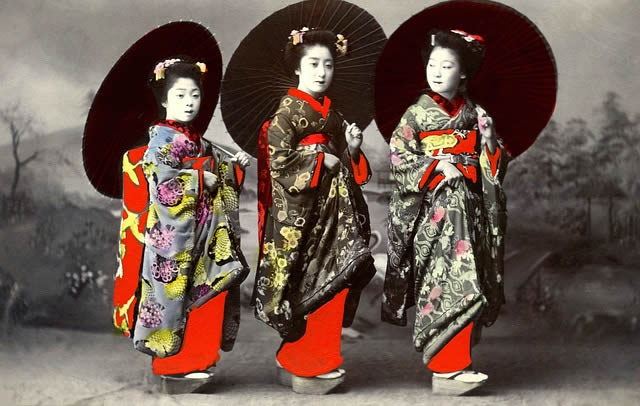今日から「The Niigata Geigi: Japan’s ‘other’ geishas -「新潟芸妓・日本のもうひとかたの芸者たち」を読んでいます。

The dancer glides noiselessly across the tatami mat floor, a branch of reddening maple leaves in her right hand.
踊り子は、右手に赤く染まった紅葉の枝を持ち、畳の上を音もなく滑っていく。
The long sleeves of her kimono denote that she is a furisode, or apprentice geisha.
袖の長い着物は、彼女が振袖、芸者見習いであることを示している。
Behind her, an onesan (senior geisha) in a fawn kimono sits on the floor, plucking a lilting rhythm on a three-stringed shamisen with a large wedge-shaped pick.
彼女の後ろでは、淡い黄褐色の着物を着たお姐さん(先輩芸者)が床に座り、軽快なリズムの三味線を大きなくさび形のピックで弾いている。
A typical scene from Kyoto’s Gion district, you might think.
これは京都祇園の典型的な光景と思うかもしれない。
But this is more than 500km to the north-west in Niigata, a historic port city on Honshu’s west coast.
だがこれは500km以上も北西の本州西岸の歴史的な港町、新潟での光景だ。
Niigata’s geisha tradition dates back more than 200 years to the Edo era (1603-1867) when the city was a major port on the Kitamaebune (literally, “north-bound ships”) shipping route that connected Osaka with Hokkaido.
新潟芸者の誕生は、江戸時代(1603-1867)に大阪と北海道を結ぶ「北前船(文字通り北方行きの船)」の主要な港であった200年以上前に遡る。
Thousands of cargo vessels made this journey each year.
毎年、何千隻もの貨物船がここを旅した。
As the capital of Japan’s largest rice producing area, Niigata became the busiest port on the Sea of Japan coast.
日本最大の米どころ新潟は、日本海側で最も忙しい港となった。
By the early Meiji Era (1868-1912), Niigata was among the wealthiest, most populous parts of the nation.
明治時代(1868-1912)初期には、新潟は日本で最も裕福で人口の多い地域の一つであった。
以前、ドキュメンタリーで新潟で芸者修業を積む女性の物語を見たことがあり、その時に初めてその存在を知りました。
新潟の花街はもちろん京都に比べると規模も小さく、知名度も劣る代わりに、新人さんでも即戦力としてお座敷に出て経験を積める、そんな理由でその女性は修業先を決めたというようなお話だったと思います。
なるほどなあと感心しましたが、京都に比べれば設備や人員や資金も少ないので、お座敷以外の仕事も色々と引き受けておられる様子でした。
そうした若い人も奮闘している新潟花街と芸者さんの物語、早速読んでいきましょう!
理由は単純明快!「少ないコストでしっかり楽しく学べるから」。
私自身の経験(高機能でビックリ)をびっしり書いていますので、良かったら読んでみてください。
下のバナーからどうぞ!






